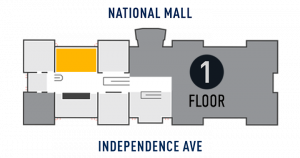The Liberty's purpose was American mass production of standard engine units when the U.S. entered World War I. Co-designed in a week in mid-1917 by Jesse Vincent of Packard Motor Car and Elbert Hall of Hall-Scott Motor Car, with a planned series of 4-, 6-, 8-, and 12-cylinder models, the Liberty used only proven components to ensure workable engines in the shortest time. The Model L-8 was the first Liberty engine. However, power requirements made it obsolete before entering service, leading to the twelve-cylinder Liberty.
The Liberty's success was due entirely to the fact that the best engineers, production experts, and manufacturing facilities were provided to the Government. Leading automotive manufacturers, including Ford, Lincoln, Packard, Marmon, and Buick, built the engines.
The Liberty 12 Model A powered numerous aircraft including the de Havilland DH-4, the Navy-Curtiss NC-4, Fokker T2, Loening Model 23, Douglas World Cruiser, Douglas M-1 Mailplane, and Curtiss H-16 flying boat.
Display Status
This object is on display in America by Air at the National Air and Space Museum in Washington, DC.

Object Details
Date
Circa World War I
Country of Origin
United States of America
Type
PROPULSION-Reciprocating & Rotary
Designer
Elbert J. Hall
Jesse G. Vincent
Model
Liberty
Manufacturer
Lincoln Motor Company
Physical Description
Type: Reciprocating, V-type, 12 cylinders, Liquid cooled
Power rating: 298 kW (400 hp) at 1,800 rpm
Displacement: 27 L (1649 cu in)
Bore and Stroke: 127 mm (5 in) x 178 mm (7 in)
Weight: 357 kg (786 lb)
Dimensions
3-D: 171.1 × 68.6 × 105.4cm (5 ft. 7 3/8 in. × 2 ft. 3 in. × 3 ft. 5 1/2 in.)
3-D (overall, including stand): 175.3 × 83.8 × 143.5cm (5 ft. 9 in. × 2 ft. 9 in. × 4 ft. 8 1/2 in.)
Materials
Aluminum
Ferrous Alloy
Copper Alloy
Adhesive Tape
Rubber
Plastic
Metal Alloys
Paint
Solder
Inventory Number
A19850445000
Credit Line
Found in collection. Donor unknown at this time. Found on NASM premises
Data Source
National Air and Space Museum
Restrictions & Rights
Usage conditions apply
For more information, visit the Smithsonians Terms of Use.



